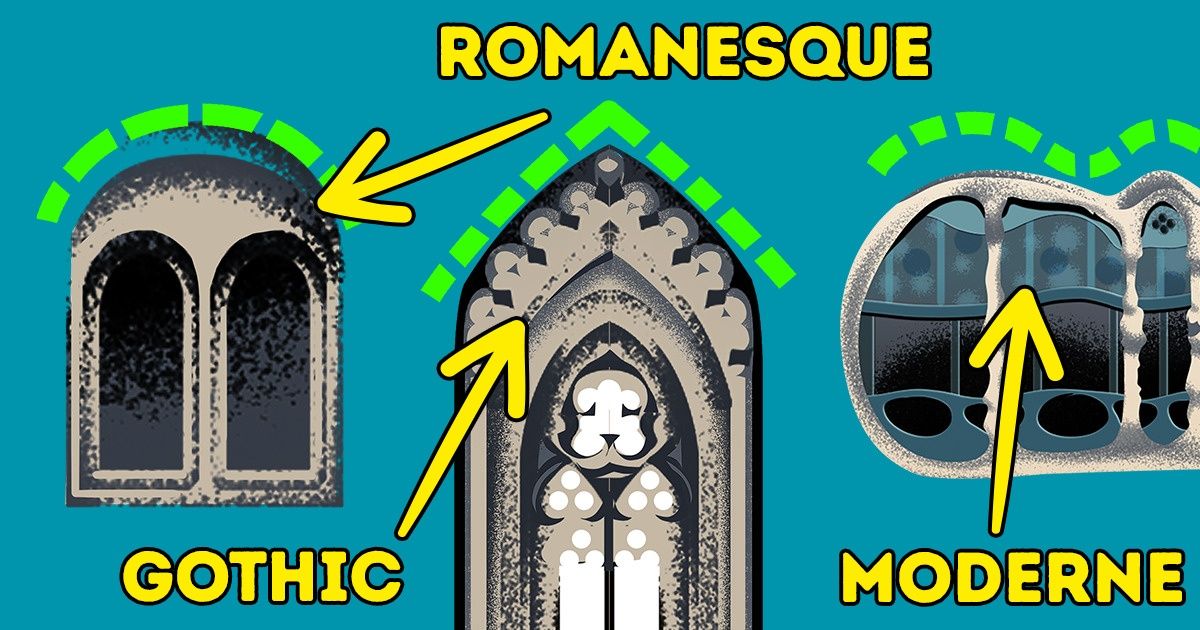
How to Identify Different Architectural Styles
Each architectural style has its own characteristics, so you can determine the historical era by the look of the building. The style includes elements like the form of a building, the method of construction, the building materials, and the regional features.
5-Minute Crafts would like to tell you about how to identify the architectural style and the historical era by the look of a building.
The Romanesque
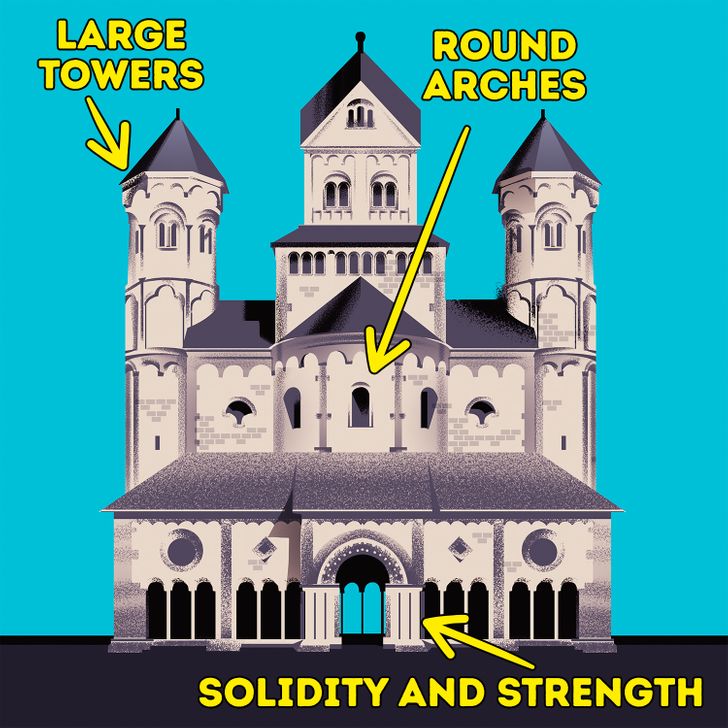
🔸 When the style was at its height: 11th-12th centuries
🔸 How to identify: massive walls, large towers, semicircular arches for windows, doors, and arcades, heavy doors, strong columns, barrel vaults, rows of arches resting on columns (arcades). The Romanesque style leaves the impression of stability, massive solidity, and strength.
🔸 Constructions representing this style: Maria Laach Abbey (the Eifel region of the Rhineland-Palatinate in Germany), Pisa Cathedral (Pisa, Italy), Église Notre-Dame la Grande (Poitiers, France)
Gothic architecture
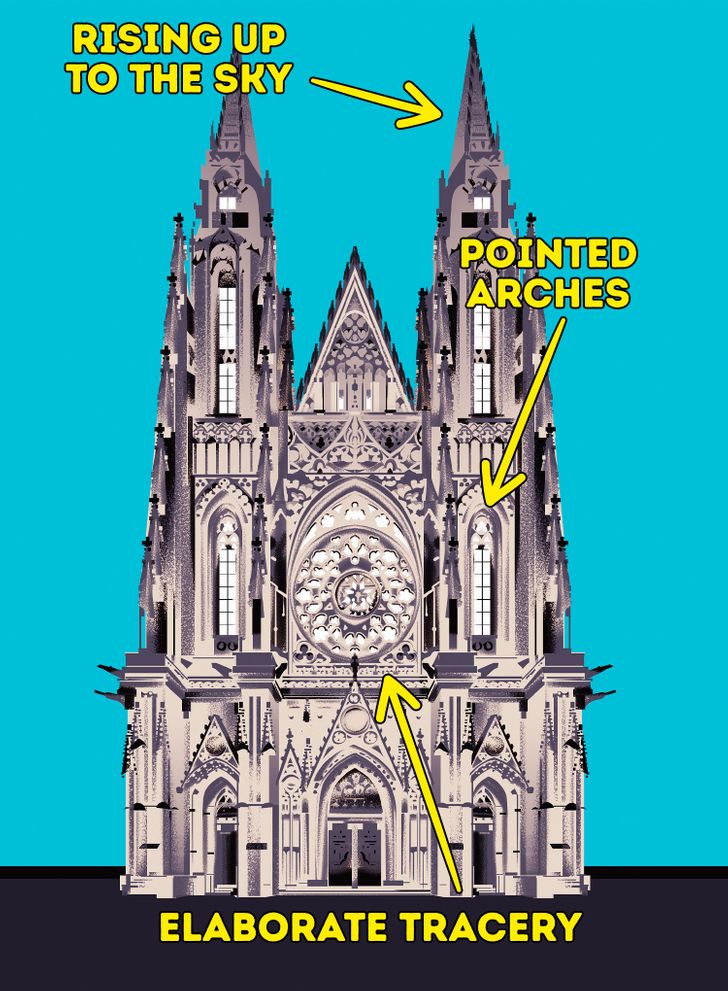
🔸 When the style was at its height: in Europe from the mid-12th century to the 16th century
🔸 How to identify: rich decoration and very tall structure, wide use of pointed arches and pointed windows, high rib vaults, graceful columns, stained-glass windows, towers and pointed spiers, elaborate tracery, thanks to which windows (vaults and panels) are divided into sections.
🔸 Constructions representing this style: St. Vitus Cathedral (Prague, Czech Republic), Notre-Dame de Paris (Paris, France), Cologne Cathedral (Cologne, Germany)
Renaissance architecture
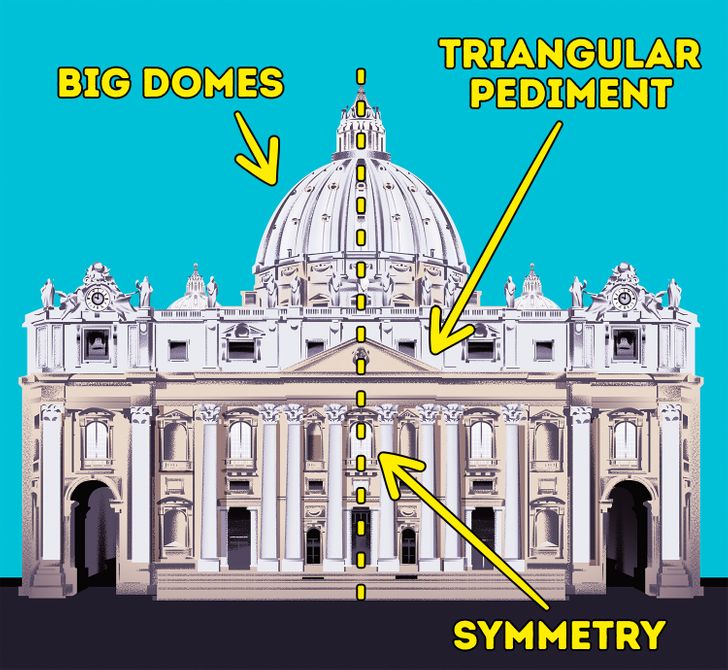
🔸 When the style was at its height: Renaissance architecture originated in Italy and superseded the Gothic style in the beginning of the 15th century. This style was popular until the end of the 16th century.
🔸 How to identify: symmetry (for example, façades are symmetrical about their vertical axis), orderly arrangement of columns, use of semicircular arches and large domes, door openings are often arched, temple façades are often crowned with triangular pediments.
🔸 Constructions representing this style: St. Peter’s Basilica (the Vatican), Florence Cathedral (Florence, Italy), Queen Anne’s Summer Palace (Prague, Czech Republic)
Baroque architecture
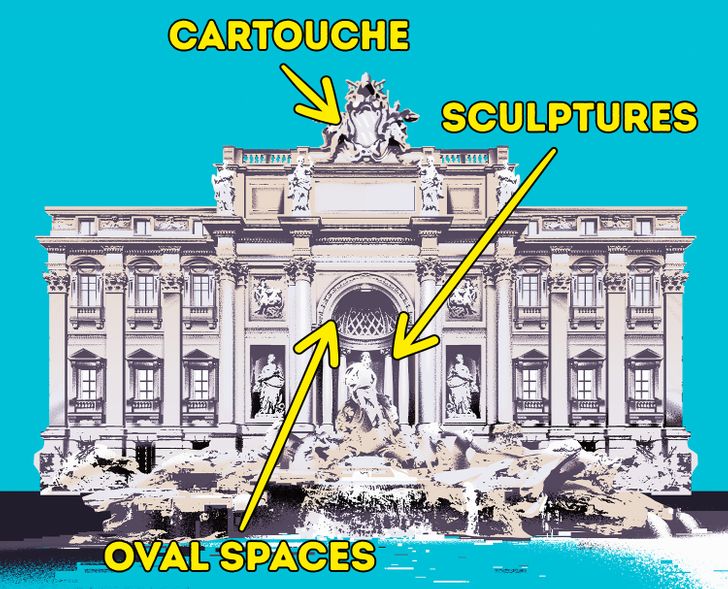
🔸 When the style was at its height: this style originated in late 16th-century Italy and lasted until the 18th century.
🔸 How to identify: grandeur, drama, and contrast (especially in lighting), cartouche, on which the emblem or coat of arms was placed, curvy shapes, twisted elements, sculptures, domes, elliptical or oval spaces that don’t have right angles. Painted ceilings and domes depicting angels and saints, creating the illusion of 3 dimensions and that a person is looking directly into the sky.
🔸 Constructions representing this style: Trevi Fountain (Rome, Italy), Karlskirche (Vienna, Austria), Church of the Gesù (Rome, Italy)
Rococo
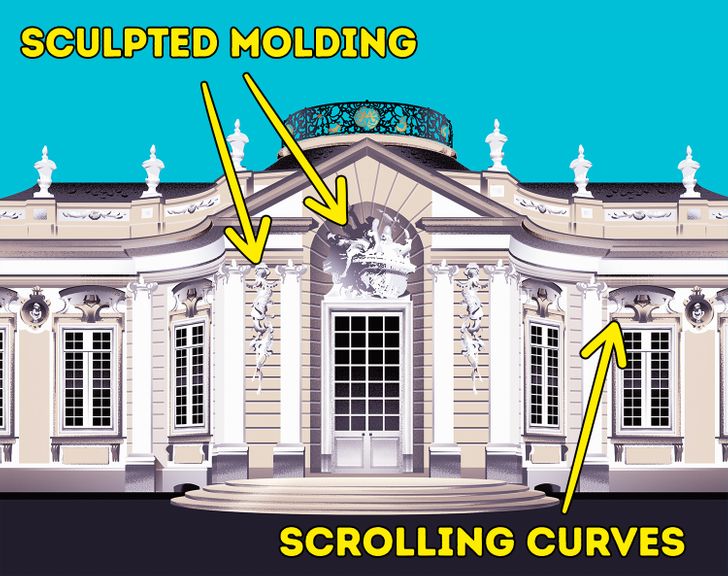
🔸 When the style was at its height: the style originated in France in the 1730s. It went into decline at the end of the 18th century.
🔸 How to identify: an exceptionally ornamental style of architecture with scrolling curves and sculpted molding. In palaces, grand stairways became centerpieces. The main decorative elements are asymmetric shells, birds, flowers, fruits, musical instruments, angels, and dragons. The style often integrates quadratura, or illusionist ceiling paintings, which are designed to give the impression that those in the room are looking up at a sky full of cherubs and other figures.
🔸 Constructions representing this style: the Amalienburg (Munich, Germany), Wieskirche (Steingaden, Germany), the Queluz National Palace (Queluz, Portugal)
Modernisme
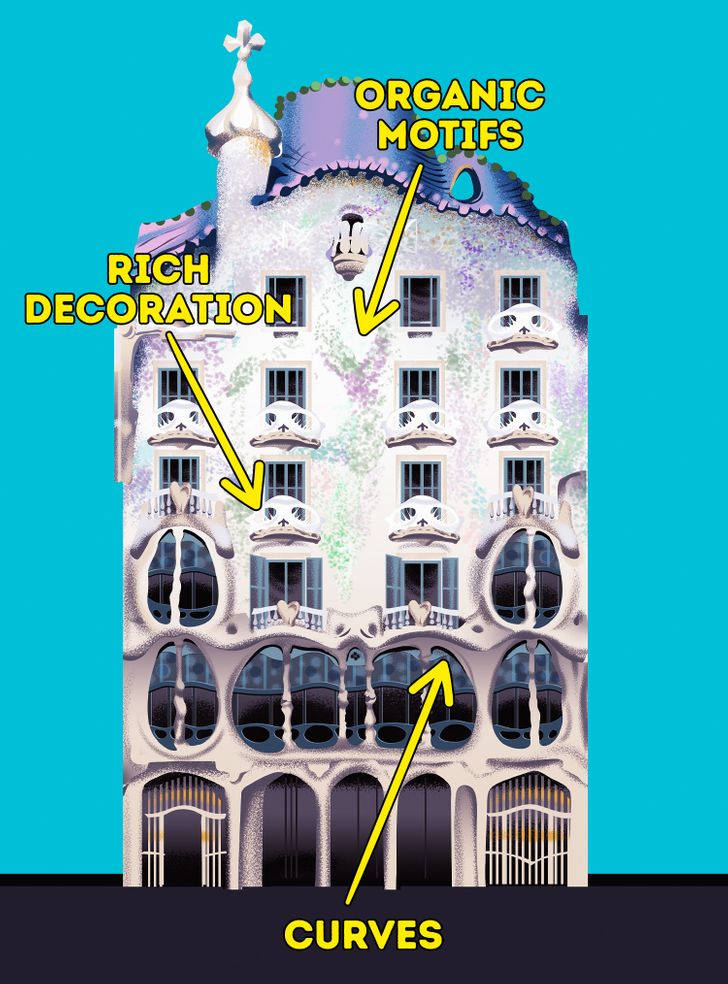
🔸 When the style was at its height: the 1880s-1910s
🔸 Other names of this style: Jugendstil in Germany, Art Nouveau in France and Belgium, Vienna Secession in Austria-Hungary, Liberty style in Italy
🔸 How to identify: the predominance of curves over straight lines, rich decorations and details, organic motifs
🔸 Constructions representing this style: Casa Batlló (Barcelona, Spain), the Majolikahaus (Vienna, Austria), the Secession Building (Vienna, Austria)
Modern architecture
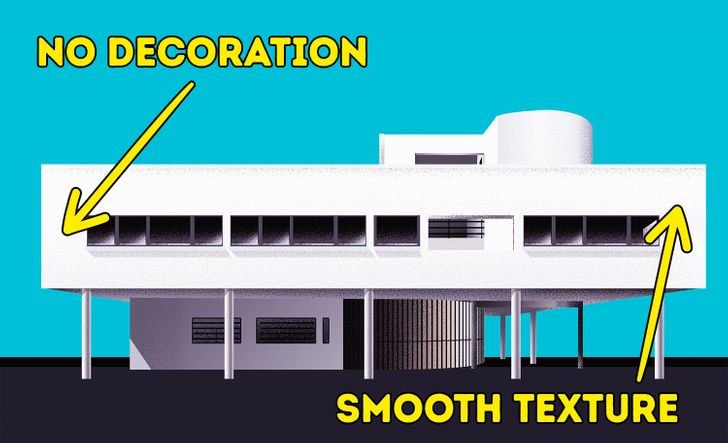
🔸 When the style was at its height: the style emerged in the first half of the 20th century and became dominant after World War II until the 1980s.
🔸 How to identify: no decorations, clean lines without additional ornamentation, smooth textures, modern building materials (steel, concrete, reinforced concrete, glass), usage simplicity
🔸 Constructions representing this style: Villa Savoye (Poissy, France), Unité d’Habitation buildings in Marseille, Berlin, and other European cities which were designed by architect Le Corbusier, the official workplace of the president of Brazil — the Palácio do Planalto (Brasilia, Brazil)
Deconstructivism
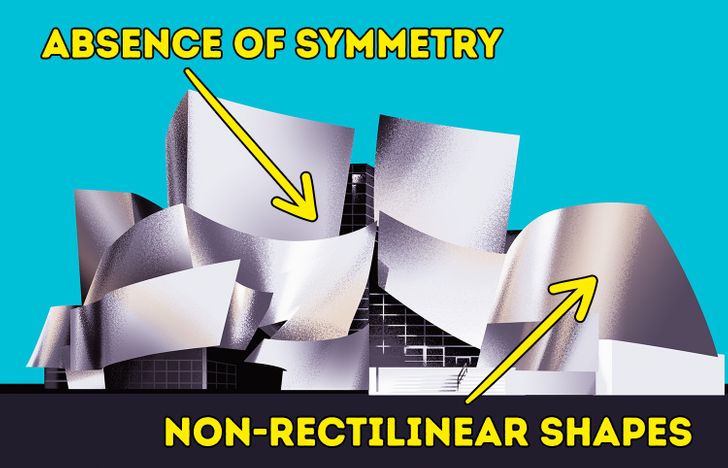
🔸 When the style was at its height: since the 1980s
🔸 How to identify: the constructions built in this style are characteriszed by an absence of obvious harmony, continuity, or symmetry. They give the impression of fragmentation and have non-rectilinear shapes, smooth surfaces, and large areas made from one single material (glass or metal).
🔸 Constructions representing this style: Walt Disney Concert Hall (Los Angeles, USA), Dancing House (Prague, Czech Republic), Guangzhou Opera House (Guangzhou, People’s Republic of China)